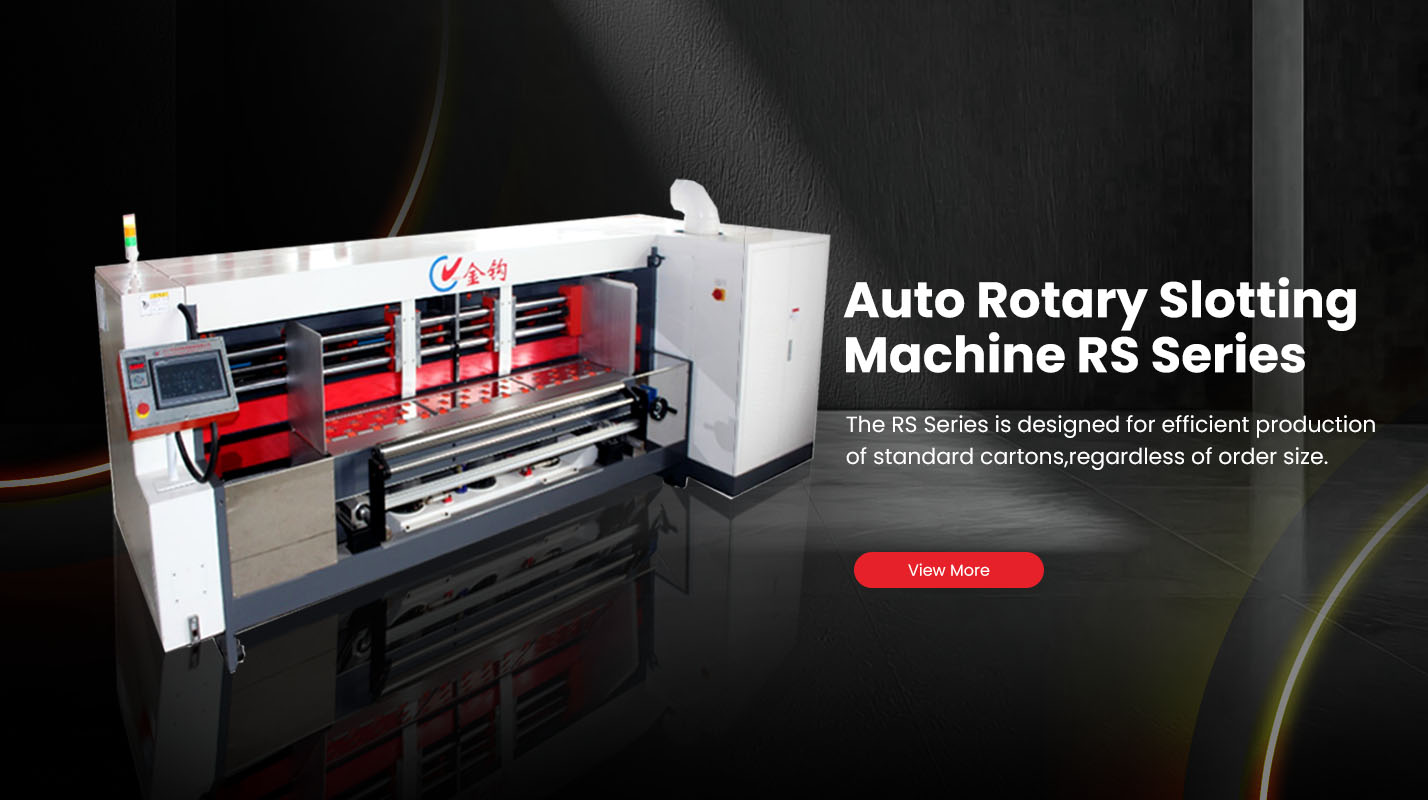Key Maintenance Tips For Corrugated Box Forming Machines
A corrugated box forming machine is the heart of any packaging production line — responsible for shaping, cutting, slotting, and folding corrugated sheets into finished boxes. Keeping this machine in peak condition is essential to ensure high production efficiency, consistent box quality, and long-term return on investment.
As a professional manufacturer of carton packaging machinery, JINGOUPACK emphasizes that regular maintenance is not optional — it’s a strategic practice that directly impacts productivity, safety, and cost efficiency.
1. Establish a Regular Maintenance Schedule
Routine maintenance should be planned and logged just like production tasks. Depending on your production volume and environment:
Daily: Clean dust, glue, and scrap paper from the work area and machine surface.
Weekly: Check lubrication points, tighten visible screws, and inspect air lines.
Monthly: Inspect rollers, belts, blades, and electrical wiring for wear.
Quarterly: Calibrate sensors, check alignment, and perform safety tests.
Keeping a digital maintenance record allows engineers to track component lifespan and prevent unexpected downtime.
Tip: JINGOUPACK recommends adopting a “Preventive Maintenance System” instead of waiting for breakdowns — it saves 20–30% on repair costs annually.
2. Keep the Machine Clean and Debris-Free
Paper dust, glue residue, and corrugated scraps can accumulate inside the forming section, causing friction and jamming. To prevent this:
Use an air compressor or vacuum to remove dust after each shift.
Wipe control panels with a dry, lint-free cloth — never use water.
Clean sensors and photo eyes regularly to maintain accuracy.
Keep the feeding section clear to prevent double-sheet feeding or misalignment.
A clean machine not only performs better but also extends the life of belts, rollers, and cutting blades.
3. Lubricate Moving Parts Properly
Friction is one of the main causes of mechanical wear. Regular lubrication minimizes resistance, reduces noise, and improves performance.
Key lubrication areas include:
Bearings on rollers and shafts
Gear sets in the slotting and folding units
Chain drives and conveyor rollers
Pneumatic cylinders and linkage joints
Use manufacturer-recommended lubricants and avoid over-oiling, which attracts dust.
For automated lubrication systems, inspect oil levels and clean filters monthly.
4. Inspect Belts, Rollers, and Chains
Belts and rollers are constantly in motion, so they require special attention.
Check belt tension — loose belts can slip, while overly tight belts may strain motors.
Inspect rollers for uneven wear or buildup; replace them if the surface becomes smooth or cracked.
Clean chains and sprockets to prevent buildup of adhesive dust that causes jumping or noise.
Timely replacement of these consumables can prevent sudden stoppages and uneven folding or scoring.
5. Calibrate Sensors and Electrical Systems
Modern box forming machines like JINGOUPACK’s CK and BM series rely on PLCs, photo sensors, and servo motors for accuracy.
To maintain precision:
Test photoelectric sensors to ensure they detect sheets properly.
Check the PLC system for error codes or miscommunication signals.
Inspect limit switches and emergency stops for responsiveness.
Verify motor control parameters — minor servo deviations can cause alignment issues in slotting or folding.
Always turn off power before electrical inspection and keep wiring diagrams accessible for technicians.
6. Maintain Sharp Cutting and Slotting Blades
Blades and slotting knives directly affect the clean edges and folding accuracy of boxes.
Worn or dull blades create ragged cuts and increase waste.
Sharpen or replace blades at the first sign of rough edges.
Use the proper angle and pressure according to the paper grade.
Keep spare blades on hand to minimize downtime.
After sharpening, balance and align blades correctly to prevent vibration.
High-quality tungsten or alloy blades, such as those used in JINGOUPACK’s slotting and creasing units, last longer and reduce overall cost per box.
7. Monitor Air Supply and Pneumatic Components
Corrugated box forming machines often use pneumatic systems for feeding, clamping, and folding.
Air leaks or irregular pressure can cause performance issues.
Check air filters and lubricators weekly.
Maintain consistent air pressure (usually 0.6–0.8 MPa) for stable operation.
Drain moisture from air tanks to prevent rust and contamination.
Inspect cylinders for oil residue or wear on seals.
Regular attention to the air system ensures consistent feeding speed and smoother box forming.
8. Check Alignment and Registration
Misalignment between slitting, scoring, and folding units can cause inaccurate box dimensions.
Run test sheets daily and confirm alignment by measuring the scored lines and cut edges.
Adjust side guides and feed rollers if sheet drift occurs.
Verify squareness and parallelism between shafts.
Recalibrate auto-positioning systems every few weeks.
Proper alignment ensures consistent box size, reduces rejects, and keeps production quality stable.
9. Perform Safety Inspections
Never overlook operator safety when maintaining packaging equipment.
Test emergency stop buttons and protective covers.
Inspect safety interlocks and power isolation switches.
Replace worn-out labels or warning signs.
Train operators to recognize unusual sounds, vibrations, or alarms.
JINGOUPACK’s machines are designed with CE-certified safety systems, but proper maintenance ensures they stay reliable under continuous operation.
10. Replace Worn Parts Before Failure
It’s always cheaper to replace parts during scheduled maintenance than to wait for a breakdown.
Identify high-wear components such as:
Bearings
Belts
Blades
Rollers
Pneumatic seals
Keep a spare parts inventory and set replacement intervals based on actual running hours rather than waiting for complete wear.
11. Train and Empower Operators
Machine reliability depends not only on maintenance teams but also on well-trained operators.
Encourage them to:
Record daily performance logs.
Report abnormal noises or vibrations immediately.
Follow start-up and shutdown procedures correctly.
Understand the machine’s lubrication and cleaning points.
Investing in operator training greatly reduces misuse and enhances machine longevity.
12. Schedule Professional Servicing
Even with in-house maintenance, schedule annual professional inspections by certified technicians.
They can identify internal wear, electrical imbalances, or calibration drift that daily checks might miss.
JINGOUPACK provides remote and on-site maintenance services for international clients, ensuring that every machine maintains peak performance throughout its lifecycle.
Conclusion
Proper maintenance of a corrugated box forming machine is the foundation of consistent quality, reduced downtime, and lower operating costs.
By implementing a preventive maintenance plan — focusing on cleaning, lubrication, alignment, and safety checks — factories can maximize output and extend the life of their equipment.
At JINGOUPACK, every machine is engineered for reliability, supported by comprehensive training, spare parts service, and global technical assistance — helping packaging manufacturers achieve sustainable, efficient, and cost-effective production.





